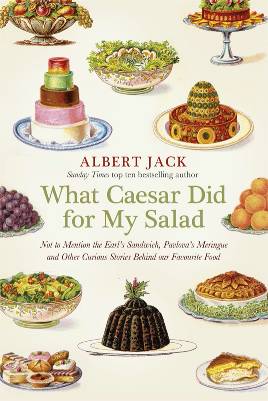Sandwich is, believe it or not, not really even a proper word. It is a real name, however. The village of Sandwich, first recorded in ad 642, is a picturesque and historic place in Kent: its name evolved from the Old English words sand and wic, meaning ‘Sand Village’ or ‘Town on the Sand.’
Now two miles from the sea, it was once a thriving seaport – the first captive elephant was landed there in 1255, before being delivered as a gift to Henry III – and the home of King Charles II’s naval fleet under the command of Sir Edward Montague.
When in 1660 his grateful king made Montague an earl, the latter pondered which of the great ports he would honour with his new title.
Bristol was one option and Portsmouth another, but the naval commander settled for Sandwich and so his hereditary title became the Earl of Sandwich.
To date there have been eleven earls but the most famous of them, the one who provided the key ingredient for every packed lunch in the Western world, was number four. John Montague (1718–92) was, like his great-grandfather, First Lord of the Admiralty but unlike him he was both corrupt and incompetent.
The navy was in a state of complete disarray by the time it was called into action during the American Revolutionary War (1775–83): the eventual defeat of the British forces was regarded by many as his fault.
And hardly surprising as the earl was far more interested in his life outside work, particularly gambling. Indeed, it was this that gave rise to the great culinary legend forever associated with him.
According to the famous story, he was once playing cards long into the wee small hours in 1762 with friends. Drunk and on a winning streak, Sandwich decided he needed some food and ordered waiters to bring him some meat but ‘between two slices of bread.’
This was to prevent his fingers from becoming greasy and marking the cards, helping his opponents to figure out his gaming pattern.
The strategy worked and the snack soon caught on at the great gaming tables and gambling clubs of England, the ‘sandwich’ quickly becoming part of the English way of life.
It didn’t help his reputation that Sandwich was also a member of the notorious Hellfire Club, a gentleman’s society set up to ridicule organized religion. No one knew what went at their meetings – members didn’t discuss their antics – but rumours were rife of orgies and satanic rituals.
It was reputedly at one of these meetings that he became the victim of one of history’s great one-liner put-downs. Sandwich is said to have abused Samuel Foote: ‘Sir, I don’t know if you will die on the gallows or of the pox.’
To which Foote shot back: ‘That, my lord, depends on whether I embrace your principles or your mistress.’ The story was speedily spread around London by his many enemies.
By his death in 1792, Sandwich had become the most unpopular man in England. Even friends suggested his epitaph should read: ‘Seldom has any man held so many offices and yet accomplished so little.’
Yet the sandwich is not his only legacy to history. As First Lord of the Admiralty, Sandwich was one of the sponsors of the voyage Captain James Cook made to the New World in 1778.
On the 14 January, Cook became the first European to visit the Hawaiian Islands, which he originally called the Sandwich Islands in honour of his benefactor.
Although the islands changed their name a century later, the South Sandwich Islands and the Sandwich Straits still bear the name of the old gambler, and inventor of the sandwich, to this day.
Not to mention the expression it has given rise to, in the sense that we can now find ourselves sandwiched between two objects or two business appointments or, as I would much prefer, between two cocktail waitresses in a Las Vegas casino.
I’m just relieved that the first earl selected Sandwich for his title. I’m not sure I’d fancy a cheese and chutney bristol, or a ham and tomato portsmouth. Would you?
What About the Open Sandwich?
The open sandwich, particularly favoured in Nordic countries and consisting of a single slice of bread with food items arranged on top, is a much older concept that the double-slice variety.
It goes back to the Middle Ages, when a large chunk of bread called a ‘trencher’ was used as a plate to hold other food. At the end of the meal, the bread could then be eaten or, if the diner had had enough, left on the floor for the dogs to devour.
And Why is It a Club Sandwich?
A club sandwich, also known as a clubhouse sandwich, has its origins in America. Usually made with three slices of bread, this double-decker sandwich traditionally consists of bacon, chicken, lettuce and tomato, always on toasted bread.
The sandwich was apparently made famous by the exclusive Saratoga Springs gaming club in New York during the late 1800s, when it became a firm favourite on the menu.
Ever since the Americans had added mayonnaise and all sorts of sauces to the common sandwich, greasy fingers were evidently once again a problem for card players, which the toasted version helped to solve. – Albert Jack
Albert Jack AUDIOBOOKS available for download here
More Food History with Albert Jack





































